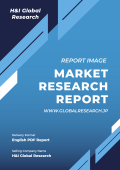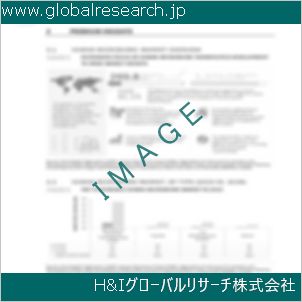1 Automotive Aluminum Market Overview
1.1 Product Definition
1.2 Automotive Aluminum Segment by Type
1.2.1 Global Automotive Aluminum Market Value Growth Rate Analysis by Type 2022 VS 2029
1.2.2 Cast Aluminum
1.2.3 Rolled Aluminum
1.2.4 Extruded Aluminum
1.2.5 Others
1.3 Automotive Aluminum Segment by End Use
1.3.1 Global Automotive Aluminum Market Value Growth Rate Analysis by End Use: 2022 VS 2029
1.3.2 Powertrain
1.3.3 Chassis & Suspension
1.3.4 Car Body
1.4 Global Market Growth Prospects
1.4.1 Global Automotive Aluminum Production Value Estimates and Forecasts (2018-2029)
1.4.2 Global Automotive Aluminum Production Capacity Estimates and Forecasts (2018-2029)
1.4.3 Global Automotive Aluminum Production Estimates and Forecasts (2018-2029)
1.4.4 Global Automotive Aluminum Market Average Price Estimates and Forecasts (2018-2029)
1.5 Assumptions and Limitations
2 Market Competition by Manufacturers
2.1 Global Automotive Aluminum Production Market Share by Manufacturers (2018-2023)
2.2 Global Automotive Aluminum Production Value Market Share by Manufacturers (2018-2023)
2.3 Global Key Players of Automotive Aluminum, Industry Ranking, 2021 VS 2022 VS 2023
2.4 Global Automotive Aluminum Market Share by Company Type (Tier 1, Tier 2 and Tier 3)
2.5 Global Automotive Aluminum Average Price by Manufacturers (2018-2023)
2.6 Global Key Manufacturers of Automotive Aluminum, Manufacturing Base Distribution and Headquarters
2.7 Global Key Manufacturers of Automotive Aluminum, Product Offered and Application
2.8 Global Key Manufacturers of Automotive Aluminum, Date of Enter into This Industry
2.9 Automotive Aluminum Market Competitive Situation and Trends
2.9.1 Automotive Aluminum Market Concentration Rate
2.9.2 Global 5 and 10 Largest Automotive Aluminum Players Market Share by Revenue
2.10 Mergers & Acquisitions, Expansion
3 Automotive Aluminum Production by Region
3.1 Global Automotive Aluminum Production Value Estimates and Forecasts by Region: 2018 VS 2022 VS 2029
3.2 Global Automotive Aluminum Production Value by Region (2018-2029)
3.2.1 Global Automotive Aluminum Production Value Market Share by Region (2018-2023)
3.2.2 Global Forecasted Production Value of Automotive Aluminum by Region (2024-2029)
3.3 Global Automotive Aluminum Production Estimates and Forecasts by Region: 2018 VS 2022 VS 2029
3.4 Global Automotive Aluminum Production by Region (2018-2029)
3.4.1 Global Automotive Aluminum Production Market Share by Region (2018-2023)
3.4.2 Global Forecasted Production of Automotive Aluminum by Region (2024-2029)
3.5 Global Automotive Aluminum Market Price Analysis by Region (2018-2023)
3.6 Global Automotive Aluminum Production and Value, Year-over-Year Growth
3.6.1 North America Automotive Aluminum Production Value Estimates and Forecasts (2018-2029)
3.6.2 Europe Automotive Aluminum Production Value Estimates and Forecasts (2018-2029)
3.6.3 China Automotive Aluminum Production Value Estimates and Forecasts (2018-2029)
3.6.4 Japan Automotive Aluminum Production Value Estimates and Forecasts (2018-2029)
4 Automotive Aluminum Consumption by Region
4.1 Global Automotive Aluminum Consumption Estimates and Forecasts by Region: 2018 VS 2022 VS 2029
4.2 Global Automotive Aluminum Consumption by Region (2018-2029)
4.2.1 Global Automotive Aluminum Consumption by Region (2018-2023)
4.2.2 Global Automotive Aluminum Forecasted Consumption by Region (2024-2029)
4.3 North America
4.3.1 North America Automotive Aluminum Consumption Growth Rate by Country: 2018 VS 2022 VS 2029
4.3.2 North America Automotive Aluminum Consumption by Country (2018-2029)
4.3.3 United States
4.3.4 Canada
4.4 Europe
4.4.1 Europe Automotive Aluminum Consumption Growth Rate by Country: 2018 VS 2022 VS 2029
4.4.2 Europe Automotive Aluminum Consumption by Country (2018-2029)
4.4.3 Germany
4.4.4 France
4.4.5 U.K.
4.4.6 Italy
4.4.7 Russia
4.5 Asia Pacific
4.5.1 Asia Pacific Automotive Aluminum Consumption Growth Rate by Region: 2018 VS 2022 VS 2029
4.5.2 Asia Pacific Automotive Aluminum Consumption by Region (2018-2029)
4.5.3 China
4.5.4 Japan
4.5.5 South Korea
4.5.6 China Taiwan
4.5.7 Southeast Asia
4.5.8 India
4.6 Latin America, Middle East & Africa
4.6.1 Latin America, Middle East & Africa Automotive Aluminum Consumption Growth Rate by Country: 2018 VS 2022 VS 2029
4.6.2 Latin America, Middle East & Africa Automotive Aluminum Consumption by Country (2018-2029)
4.6.3 Mexico
4.6.4 Brazil
4.6.5 Turkey
5 Segment by Type
5.1 Global Automotive Aluminum Production by Type (2018-2029)
5.1.1 Global Automotive Aluminum Production by Type (2018-2023)
5.1.2 Global Automotive Aluminum Production by Type (2024-2029)
5.1.3 Global Automotive Aluminum Production Market Share by Type (2018-2029)
5.2 Global Automotive Aluminum Production Value by Type (2018-2029)
5.2.1 Global Automotive Aluminum Production Value by Type (2018-2023)
5.2.2 Global Automotive Aluminum Production Value by Type (2024-2029)
5.2.3 Global Automotive Aluminum Production Value Market Share by Type (2018-2029)
5.3 Global Automotive Aluminum Price by Type (2018-2029)
6 Segment by End Use
6.1 Global Automotive Aluminum Production by End Use (2018-2029)
6.1.1 Global Automotive Aluminum Production by End Use (2018-2023)
6.1.2 Global Automotive Aluminum Production by End Use (2024-2029)
6.1.3 Global Automotive Aluminum Production Market Share by End Use (2018-2029)
6.2 Global Automotive Aluminum Production Value by End Use (2018-2029)
6.2.1 Global Automotive Aluminum Production Value by End Use (2018-2023)
6.2.2 Global Automotive Aluminum Production Value by End Use (2024-2029)
6.2.3 Global Automotive Aluminum Production Value Market Share by End Use (2018-2029)
6.3 Global Automotive Aluminum Price by End Use (2018-2029)
7 Key Companies Profiled
7.1 Ryobi
7.1.1 Ryobi Automotive Aluminum Corporation Information
7.1.2 Ryobi Automotive Aluminum Product Portfolio
7.1.3 Ryobi Automotive Aluminum Production, Value, Price and Gross Margin (2018-2023)
7.1.4 Ryobi Main Business and Markets Served
7.1.5 Ryobi Recent Developments/Updates
7.2 Ahresty
7.2.1 Ahresty Automotive Aluminum Corporation Information
7.2.2 Ahresty Automotive Aluminum Product Portfolio
7.2.3 Ahresty Automotive Aluminum Production, Value, Price and Gross Margin (2018-2023)
7.2.4 Ahresty Main Business and Markets Served
7.2.5 Ahresty Recent Developments/Updates
7.3 Georg Fischer
7.3.1 Georg Fischer Automotive Aluminum Corporation Information
7.3.2 Georg Fischer Automotive Aluminum Product Portfolio
7.3.3 Georg Fischer Automotive Aluminum Production, Value, Price and Gross Margin (2018-2023)
7.3.4 Georg Fischer Main Business and Markets Served
7.3.5 Georg Fischer Recent Developments/Updates
7.4 Norsk Hydro
7.4.1 Norsk Hydro Automotive Aluminum Corporation Information
7.4.2 Norsk Hydro Automotive Aluminum Product Portfolio
7.4.3 Norsk Hydro Automotive Aluminum Production, Value, Price and Gross Margin (2018-2023)
7.4.4 Norsk Hydro Main Business and Markets Served
7.4.5 Norsk Hydro Recent Developments/Updates
7.5 Constellium
7.5.1 Constellium Automotive Aluminum Corporation Information
7.5.2 Constellium Automotive Aluminum Product Portfolio
7.5.3 Constellium Automotive Aluminum Production, Value, Price and Gross Margin (2018-2023)
7.5.4 Constellium Main Business and Markets Served
7.5.5 Constellium Recent Developments/Updates
7.6 UACJ
7.6.1 UACJ Automotive Aluminum Corporation Information
7.6.2 UACJ Automotive Aluminum Product Portfolio
7.6.3 UACJ Automotive Aluminum Production, Value, Price and Gross Margin (2018-2023)
7.6.4 UACJ Main Business and Markets Served
7.6.5 UACJ Recent Developments/Updates
7.7 Arconic
7.7.1 Arconic Automotive Aluminum Corporation Information
7.7.2 Arconic Automotive Aluminum Product Portfolio
7.7.3 Arconic Automotive Aluminum Production, Value, Price and Gross Margin (2018-2023)
7.7.4 Arconic Main Business and Markets Served
7.7.5 Arconic Recent Developments/Updates
7.8 Impol
7.8.1 Impol Automotive Aluminum Corporation Information
7.8.2 Impol Automotive Aluminum Product Portfolio
7.8.3 Impol Automotive Aluminum Production, Value, Price and Gross Margin (2018-2023)
7.8.4 Impol Main Business and Markets Served
7.7.5 Impol Recent Developments/Updates
7.9 OTTO FUCHS
7.9.1 OTTO FUCHS Automotive Aluminum Corporation Information
7.9.2 OTTO FUCHS Automotive Aluminum Product Portfolio
7.9.3 OTTO FUCHS Automotive Aluminum Production, Value, Price and Gross Margin (2018-2023)
7.9.4 OTTO FUCHS Main Business and Markets Served
7.9.5 OTTO FUCHS Recent Developments/Updates
7.10 STEP-G
7.10.1 STEP-G Automotive Aluminum Corporation Information
7.10.2 STEP-G Automotive Aluminum Product Portfolio
7.10.3 STEP-G Automotive Aluminum Production, Value, Price and Gross Margin (2018-2023)
7.10.4 STEP-G Main Business and Markets Served
7.10.5 STEP-G Recent Developments/Updates
7.11 Kaiser Aluminum
7.11.1 Kaiser Aluminum Automotive Aluminum Corporation Information
7.11.2 Kaiser Aluminum Automotive Aluminum Product Portfolio
7.11.3 Kaiser Aluminum Automotive Aluminum Production, Value, Price and Gross Margin (2018-2023)
7.11.4 Kaiser Aluminum Main Business and Markets Served
7.11.5 Kaiser Aluminum Recent Developments/Updates
7.12 Hindalco Industries
7.12.1 Hindalco Industries Automotive Aluminum Corporation Information
7.12.2 Hindalco Industries Automotive Aluminum Product Portfolio
7.12.3 Hindalco Industries Automotive Aluminum Production, Value, Price and Gross Margin (2018-2023)
7.12.4 Hindalco Industries Main Business and Markets Served
7.12.5 Hindalco Industries Recent Developments/Updates
7.13 EURAL GNUTTI
7.13.1 EURAL GNUTTI Automotive Aluminum Corporation Information
7.13.2 EURAL GNUTTI Automotive Aluminum Product Portfolio
7.13.3 EURAL GNUTTI Automotive Aluminum Production, Value, Price and Gross Margin (2018-2023)
7.13.4 EURAL GNUTTI Main Business and Markets Served
7.13.5 EURAL GNUTTI Recent Developments/Updates
7.14 Guangdong Hongtu
7.14.1 Guangdong Hongtu Automotive Aluminum Corporation Information
7.14.2 Guangdong Hongtu Automotive Aluminum Product Portfolio
7.14.3 Guangdong Hongtu Automotive Aluminum Production, Value, Price and Gross Margin (2018-2023)
7.14.4 Guangdong Hongtu Main Business and Markets Served
7.14.5 Guangdong Hongtu Recent Developments/Updates
7.15 IKD
7.15.1 IKD Automotive Aluminum Corporation Information
7.15.2 IKD Automotive Aluminum Product Portfolio
7.15.3 IKD Automotive Aluminum Production, Value, Price and Gross Margin (2018-2023)
7.15.4 IKD Main Business and Markets Served
7.15.5 IKD Recent Developments/Updates
7.16 Wencan
7.16.1 Wencan Automotive Aluminum Corporation Information
7.16.2 Wencan Automotive Aluminum Product Portfolio
7.16.3 Wencan Automotive Aluminum Production, Value, Price and Gross Margin (2018-2023)
7.16.4 Wencan Main Business and Markets Served
7.16.5 Wencan Recent Developments/Updates
7.17 Xusheng
7.17.1 Xusheng Automotive Aluminum Corporation Information
7.17.2 Xusheng Automotive Aluminum Product Portfolio
7.17.3 Xusheng Automotive Aluminum Production, Value, Price and Gross Margin (2018-2023)
7.17.4 Xusheng Main Business and Markets Served
7.17.5 Xusheng Recent Developments/Updates
7.18 APALT
7.18.1 APALT Automotive Aluminum Corporation Information
7.18.2 APALT Automotive Aluminum Product Portfolio
7.18.3 APALT Automotive Aluminum Production, Value, Price and Gross Margin (2018-2023)
7.18.4 APALT Main Business and Markets Served
7.18.5 APALT Recent Developments/Updates
7.19 Zhongwang
7.19.1 Zhongwang Automotive Aluminum Corporation Information
7.19.2 Zhongwang Automotive Aluminum Product Portfolio
7.19.3 Zhongwang Automotive Aluminum Production, Value, Price and Gross Margin (2018-2023)
7.19.4 Zhongwang Main Business and Markets Served
7.19.5 Zhongwang Recent Developments/Updates
7.20 Kam Kiu Aluminium
7.20.1 Kam Kiu Aluminium Automotive Aluminum Corporation Information
7.20.2 Kam Kiu Aluminium Automotive Aluminum Product Portfolio
7.20.3 Kam Kiu Aluminium Automotive Aluminum Production, Value, Price and Gross Margin (2018-2023)
7.20.4 Kam Kiu Aluminium Main Business and Markets Served
7.20.5 Kam Kiu Aluminium Recent Developments/Updates
8 Industry Chain and Sales Channels Analysis
8.1 Automotive Aluminum Industry Chain Analysis
8.2 Automotive Aluminum Key Raw Materials
8.2.1 Key Raw Materials
8.2.2 Raw Materials Key Suppliers
8.3 Automotive Aluminum Production Mode & Process
8.4 Automotive Aluminum Sales and Marketing
8.4.1 Automotive Aluminum Sales Channels
8.4.2 Automotive Aluminum Distributors
8.5 Automotive Aluminum Customers
9 Automotive Aluminum Market Dynamics
9.1 Automotive Aluminum Industry Trends
9.2 Automotive Aluminum Market Drivers
9.3 Automotive Aluminum Market Challenges
9.4 Automotive Aluminum Market Restraints
10 Research Finding and Conclusion
11 Methodology and Data Source
11.1 Methodology/Research Approach
11.1.1 Research Programs/Design
11.1.2 Market Size Estimation
11.1.3 Market Breakdown and Data Triangulation
11.2 Data Source
11.2.1 Secondary Sources
11.2.2 Primary Sources
11.3 Author List
11.4 Disclaimer
| ※参考情報 自動車用アルミニウムは、現代の自動車産業において非常に重要な役割を果たしている材料です。自動車の軽量化と燃費向上、さらには環境への配慮から、その利用がますます広がっています。ここでは、自動車用アルミニウムの定義、特徴、種類、用途、関連技術について詳しく見ていきます。 まず、アルミニウムは地殻に豊富に存在する金属であり、軽量で耐腐食性が高く、成形性に優れています。このため、自動車の車体、エンジン、サスペンションなど、さまざまな部品に使用されています。自動車用アルミニウムは、主に自動車の設計や重量バランスを改善するために利用されるアルミニウムの特定の合金を指します。その合金は、強度や加工性、耐久性を高めるために、さまざまな元素が添加されています。 自動車用アルミニウムの特徴としては、まず第一にその軽さがあります。アルミニウムは鉄の約3分の1の密度しかなく、この軽さが自動車全体の軽量化に寄与します。軽量化は燃費の向上に直結し、CO2排出量の削減にもつながります。また、アルミニウムは強度があり、エネルギー吸収性能に優れているため、安全性の向上に寄与します。このため、近年では衝突安全性が求められる車両の設計にも多く採用されています。 次に、自動車用アルミニウムにはいくつかの異なる種類があります。主に、アルミニウム合金はシリーズごとに分類され、特に自動車産業で広く利用されているのが、6000系および7000系の合金です。6000系は、マグネシウムとシリコンを主成分とするもので、加工性や耐食性に優れています。一方、7000系は亜鉛を主成分とし、強度に優れるため、特に高性能なスポーツカーや大型SUVに使用されることが多いです。 自動車用アルミニウムの用途は多岐にわたります。ボディパネルやフレーム、ホイール、エンジン部品、サスペンション部品など、構造的な部品から装飾的な部品まで、さまざまな部位で利用されています。特に、ボディパネルに使用される場合は、成形性と軽量性が求められ、高度な製造技術が必要とされます。また、アルミニウムは電気伝導性に優れているため、電気自動車やハイブリッド車の電気系統にも使用されます。 さらに、自動車用アルミニウムの利用は環境面でも評価されています。軽量化によって燃費が改善される知識は広まっていますが、リサイクル性の高さも重要な特徴です。アルミニウムは再生可能な材料であり、リサイクルの際に必要なエネルギーも比較的少なくて済みます。このため、持続可能な自動車産業の構築に寄与していると言えます。 自動車用アルミニウムに関連する技術革新も進んでいます。例えば、無溶接製造技術や、アルミニウムと他の材料との複合化技術が注目されています。無溶接製造技術は、接合部の強度を向上させることができ、製造時のコスト削減にもつながります。複合化技術では、アルミニウムとカーボンファイバーなどの軽量素材を組み合わせ、高い強度と軽さを両立させる新しい部品が開発されています。 しかし、自動車用アルミニウムに関する課題も存在します。製造コストが高いことや、鉄に比べて加工が難しいこと、さらには酸化アルミニウムによる腐食が問題となることがあります。これらの課題に対処するため、新たな製造プロセスや表面処理技術の開発が継続的に行われています。 将来の自動車産業においては、さらなるアルミニウムの利用が期待されます。特に、自動運転技術や電気自動車が普及する中で、軽量化のニーズはますます高まると考えられます。また、グローバルな環境規制の強化により、燃費改善やCO2排出削減のための材料として、アルミニウムが注目されることでしょう。 結論として、自動車用アルミニウムは現代の自動車産業において欠かすことのできない材料です。その軽量性、耐腐食性、高い強度により、自動車の性能や安全性向上に寄与しています。さらに、環境への負担を軽減するための持続可能な材料としての役割も担っています。今後の技術革新により、より一層の活用が進むことでしょう。自動車用アルミニウムのさらなる発展には、産業全体の変革に向けた期待が寄せられています。 |
❖ 免責事項 ❖
http://www.globalresearch.jp/disclaimer

-gr.jpg)










